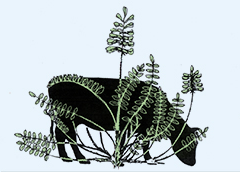Abstract
Water hemlock are plants of the genus Cicuta and are toxic to animals and humans. The primary toxin is cicutoxin, which is abundant in the tubers, but less abundant in other parts of the plant. Other cicutoxin-like compounds, such as cicutols, which may also contribute to the toxicity of water hemlock, are more abundant in non-tuber plant parts. The objective of this study was to determine the toxicity of different parts of water hemlock and characterize their effects on motor function/coordination in mice. An aqueous extract of green seeds, dry seeds, tubers, flowers and stems of water hemlock was dosed orally to mice to determine their acute toxicity. The results indicated that only the green seeds and tubers were sufficiently toxic to animals to induce seizures and death. The LD50 for tubers and green seeds was 17 mg/kg and 1320 mg/kg, respectively. Several tests were used to evaluate motor function and behavior in treated mice including rotarod, tremor monitor, and open field. The animals were evaluated before dosing and 30, 90, 120, 150, 180, 240, and 300 min after dosing. Water hemlock affected muscle function of mice, including their balance and motility on a rotarod, motor activity, and exploratory and anxiety-related (i.e., thigmotaxis) behaviors in an open field. Seizures interspersed with central nervous system (CNS) motor depression were observed in animals poisoned by water hemlock. Extracts from tubers were especially potent in causing a decrease in motor activity and resultant depression, while periodically provoking seizures. Further research is needed to identify, quantitate, and purify cicutoxin and the other polyacetylene compounds from the various water hemlock plant parts to evaluate their toxicity and effects on motor function.
Recommended Citation
Orlando-Goulart, Camila F. P.; Welch, Kevin D.; Pfister, James A.; Goulart, Daniel S.; Damasceno, Adilson D.; and Lee, Stephen T.
(2018)
"Neurobehavioral Evaluation of Mice Dosed With Water Hemlock Green Seeds and Tubers,"
Poisonous Plant Research (PPR): Vol. 1, p. 1-13.
DOI: https://doi.org/10.26077/sk8v-xz71
Available at:
https://digitalcommons.usu.edu/poisonousplantresearch/vol1/iss1/1

